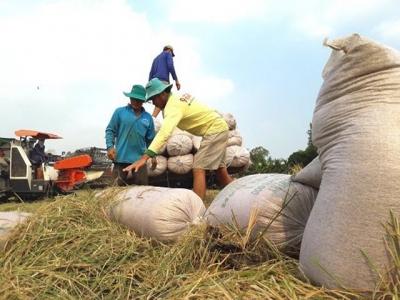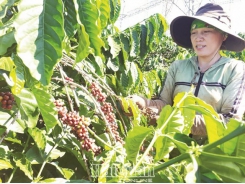Thai policy on rice subsidy is double-edged sword for Vietnam

The government of Thailand has approved a budget of 21.5 billion baht to ensure a rice price at a reasonable level for Thai farmers. The policy is expected to have a negative impact on other export countries, including Vietnam.
The program is expected to benefit 892,000 rice farmers who have registered with the Thailand Ministry of Agriculture and Cooperatives. The aim of the program is to ensure that the rice price brings reasonable profits to farmers despite price fluctuations.
According to the Vietnam News Agency, the policy will be applied for one year, commencing from October 2019, valid for some kinds of products, including Hom Mali fragrant rice, Pathum Thani, sticky rice and other fragrant rice varieties.
Under the program, the Thai government ensures a stable price of 10,000 baht per ton, or $325, for white rice production, 12,000 baht per ton, or $390, for sticky rice.
Pham Quang Dieu, director of Agromonitor, a market analysis firm, believes the Thai subsidy policy won’t have a big impact on Vietnam’s rice exports, because Thai rice price doesn’t compete with Vietnamese (Thai price is higher).
“Moreover, Vietnam’s scented rice varieties OM 5451 and Dai Thom 8 now have prices very competitive with Thai scented varieties and they are a favorite in the market,” he said.
According to Nguyen Thanh Phong, director of Van Loi Company, the Thai government uses the state budget to be sure that the rice purchase price is stable even if the market price goes down.
However, the program, to some extent, leads to disadvantages in export. Once Thailand raises the rice purchase price, this means that the cost price is pushed up. In other words, the government’s intervention through the subsidy program would ‘distort’ the market and break market rules.
Meanwhile, when exporting rice, Thailand has to compete with many strong exporters, including Vietnam, India, Pakistan, Myanmar and Cambodia.
“With the subsidy program, Thai rice will not be competitive in the market,” he commented.
However, the director of a rice export company in Mekong River Delta said if Thailand subsidizes the rice price, which leads to difficulties in exporting rice, or to high inventory level, this would badly affect other rice export countries, including Vietnam.
In the past, Thailand once applied a similar program under the administration of Yingluck Shinawatra in 2011, which led to a record high inventory level of the country, which exceeded 11 million tons at times. Finally, the government of Thailand had to clear the stockpile at low prices, thus affecting Vietnam’s exports.
As such, Thai subsidy policy is believed to be a double-edged sword for Thailand’s rivals, including Vietnam.
Related news
Tools

Phối trộn thức ăn chăn nuôi

Pha dung dịch thủy canh

Định mức cho tôm ăn

Phối trộn phân bón NPK

Xác định tỷ lệ tôm sống

Chuyển đổi đơn vị phân bón

Xác định công suất sục khí

Chuyển đổi đơn vị tôm

Tính diện tích nhà kính

Tính thể tích ao



 Researchers to transform anaerobic digestion
Researchers to transform anaerobic digestion  Bạc Liêu’s large-scale rice fields prove benefit of…
Bạc Liêu’s large-scale rice fields prove benefit of…